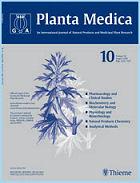“Behavioral studies have suggested a key role for the cannabinoid system in the modulation of conditioned fear memory. Likewise, much of the literature has revealed that the serotonergic system affects Pavlovian fear conditioning and extinction. A high level of functional overlap between the serotonin and cannabinoid systems has also been reported.
To clarify the interaction between the hippocampal serotonin (5-HT4) receptor and the cannabinoid CB1 receptor in the acquisition of fear memory, the effects of 5-HT4 agents, arachidonylcyclopropylamide (ACPA; CB1 receptor agonist), and the combined use of these drugs on fear learning were studied in a fear conditioning task in adult male NMRI mice.
Pre-training intraperitoneal administration of ACPA (0.1 mg/kg) decreased the percentage of freezing time in both context- and tone-dependent fear conditions, suggesting impairment of the acquisition of fear memory. Pre-training, intra-hippocampal (CA1) microinjection of RS67333, a 5-HT4 receptor agonist, at doses of 0.1 and 0.2 or 0.2 µg/mouse impaired contextual and tone fear memory, respectively. A subthreshold dose of RS67333 (0.005 µg/mouse) did not alter the ACPA response in either condition.
Moreover, intra-CA1 microinjection of RS23597 as a 5-HT4 receptor antagonist did not alter context-dependent fear memory acquisition, but it did impair tone-dependent fear memory acquisition. However, a subthreshold dose of the RS23597 (0.01 µg/mouse) potentiated ACPA-induced fear memory impairment in both conditions.
Therefore, we suggest that the blockade of hippocampal 5-HT4 serotonergic system modulates cannabinoid signaling induced by the activation of CB1 receptors in conditioned fear.”
http://www.ncbi.nlm.nih.gov/pubmed/27296273


